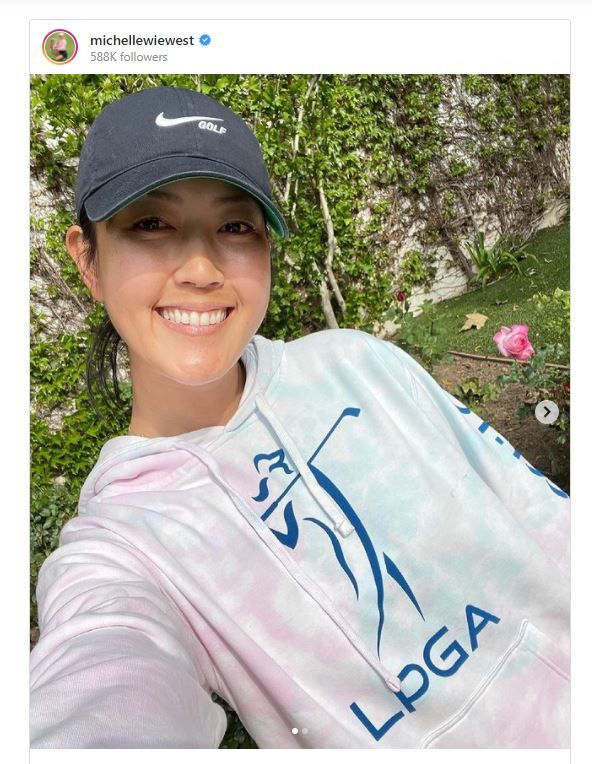The drama. The intrigue. The scandal. No, this is not the most recent episode of your favorite show on Netflix. Nor is it the juicy summer novel you are taking on your next beach vacation.
It is the hoodie. And it has caused quite a stir on the golf scene.
Hoodies, in this case, is defined as a sweatshirt with a hood attached, have been adorned by a few male and female professional players during tournament play. When they did, it caught the attention of many in golf circles. All of a sudden, blogs, articles, and commentaries have been written about this one seemingly innocent garment. “It’s not appropriate for the golf course,” some exclaim. Others say it depends on the fabric. Some even question how in the world golf can survive if such things are even allowed on the golf course. “If we allow hoodies, then where does it all stop?” they questioned. Why the uproar? Why would a fashion item have such an impact on the world of golf? Well, to fully understand this phenomenon, we need to step back into hoodie history.
Hoodies first appeared in ancient Greece. They also were quite common in Medieval Europe during the 12th Century. Monks wore garments with a hood attached to their robes. Fast forward to modern times where the apparel brand Champion manufactured the hooded sweatshirt in the 1930s for laborers and athletes to shield them from the harsh elements which they worked and performed. As time moved on, the hoodie became mainstream fashion due to the popularity of the Rocky movie in the 1970s, the hip hop culture of the 1990s, and finally with high end luxury brands producing catwalk versions for hundreds of dollars.

Even with all this success, the hoodie has a controversial past, as well. As time has passed, hoodies became associated with negative stereotypes and sinister inferences. Hoodies became correlated to criminal activity, too. The hoodie became a garment with connotations such as “frightening” and “moral decay” (Barnard, 2017). The garment became a symbol of the dark side of human nature, corruption, and a value system not conducive for common good. It even got to the point that some locations, such as malls, prohibited hoodies. Laws were proposed in different countries which would outlaw them in certain public places.
For context, outcry over specific articles of clothing has been seen many times before. For instance, take the corset. This garment has an amazing story, which encompasses everything from it being a fashion necessity all the way to the cultural revolution of women’s rights. The corset was extremely controversial during its time. It produced opinions such as women shouldn’t leave the house without one and conversely being seen as a health hazard. Other clothing controversies include women wearing pants (thank you Katherine Hepburn for wearing them to golf), bloomers, bikinis, bobbed hair in the 1920s, high heels, and even leggings. Each of these items have a fashion, culture, and meaning story of their own. Some continue to carry negative perceptions to this day.
Therefore, when hoodies made their way to the golf course, along came the perceptions. Some of these perceptions were quite positive. Afterall, high end designers and the fashion mainstream had accepted them a long time ago. However, the negative perceptions followed, as well. I would argue the negative ones were deep-seeded and often settled in the subconscious. Attitudes about hoodies were much more than just a fashion statement. It was a value-based cultural bias. And hasn’t golf grappled with this cultural bias before? Has it not dealt with other forms of discrimination including economic and gender-based biases? The hoodie is more than just a piece of clothing. It is a symbol of culture which made the golf community very, very uncomfortable.
A recent example where the hoodie was used positively was the WNBA (Women’s National Basketball Association) orange hoodie campaign. This hoodie was named the 2020 Best Fashion Statement of the Year by the Sport Business Journal, the best-selling WNBA item ever, and a huge success as far as fulfilling the goal of promoting women’s basketball and sports in general. Numerous NBA players wore it in support of their fellow players. Due to this campaign and other initiatives, women’s basketball is enjoying an overall increase in viewership.
Golf has gotten in on the act recently, as well. The new tie-dye LPGA unisex hoodie was released in April 2021 and sold out in three hours. LPGA player Michelle Wie West teamed up with the LPGA to create the garment to accomplish two main goals: 1. increase awareness of women’s sport and 2. raise money for important charities which are working to change the face of golf and increase participation/representation of girls of color. Even after a re-stock it sold out again. Don’t worry, they keep restocking. Apparently, people were hungry for some LPGA gear and this fit the bill. And all for a good cause to boot.
If we start looking below the surface of why the hoodie caused such a stir in golf, we can see it was more than just an opinion of what clothes are appropriate for the golf course. It is more of a long-standing perception and attitude which people hold deep within their memory. Some see it as a threat to traditional golf culture. Some see it as fashion statement. Some see it as a functional way to keep their head warm when they play in cooler temperatures.
Ironically, as I write this, I am wearing my LPGA tie-dye hoodie. I am reminded of what it stands for. I am reminded that nothing can change a culture quicker than fashion. I am reminded golf clothing is more than a collared shirt. There is no question we will continue to see hoodies being worn by professional players who choose to do so. The same goes for regular players like me. In fact, I wore one the other day when I played. (Unfortunately, I did not play as well as Danielle Kang did when she wore it.) Clothing is historically a powerful form of communication and meaning. The same is true today. No matter if we are ditching corsets or adorning a hoodie, golf culture is seeing a silent form of empowerment through clothing.
So, watch out quarter zip. You have some company.
Reference
Barnard, M. (2017). Fashion statements: Communication and culture. Fashion Theory. Routledge.







